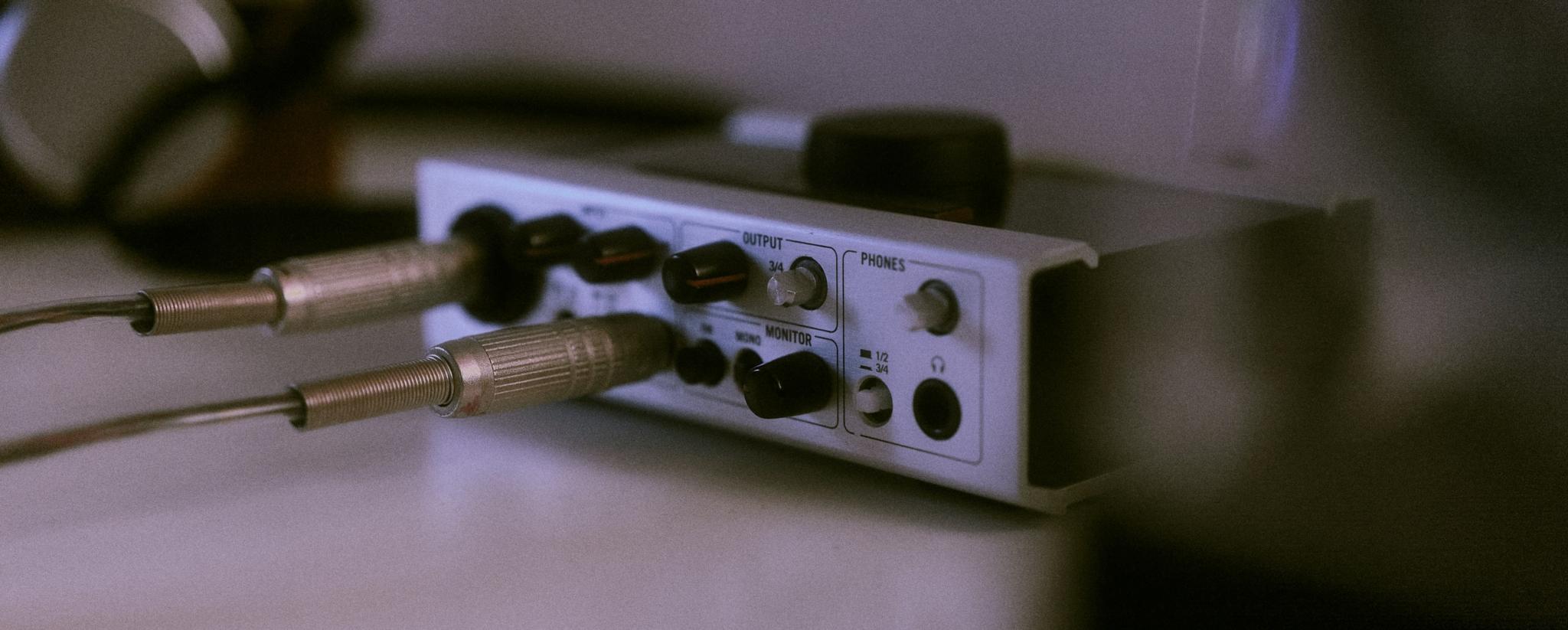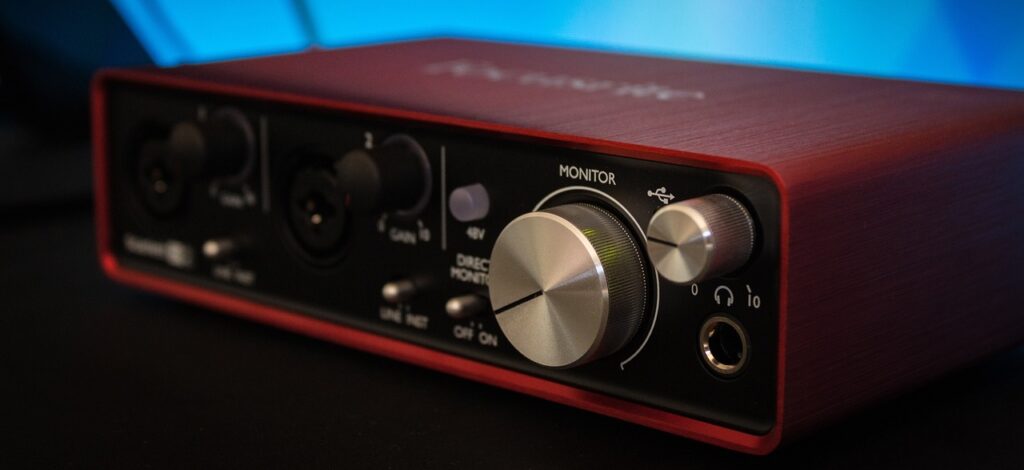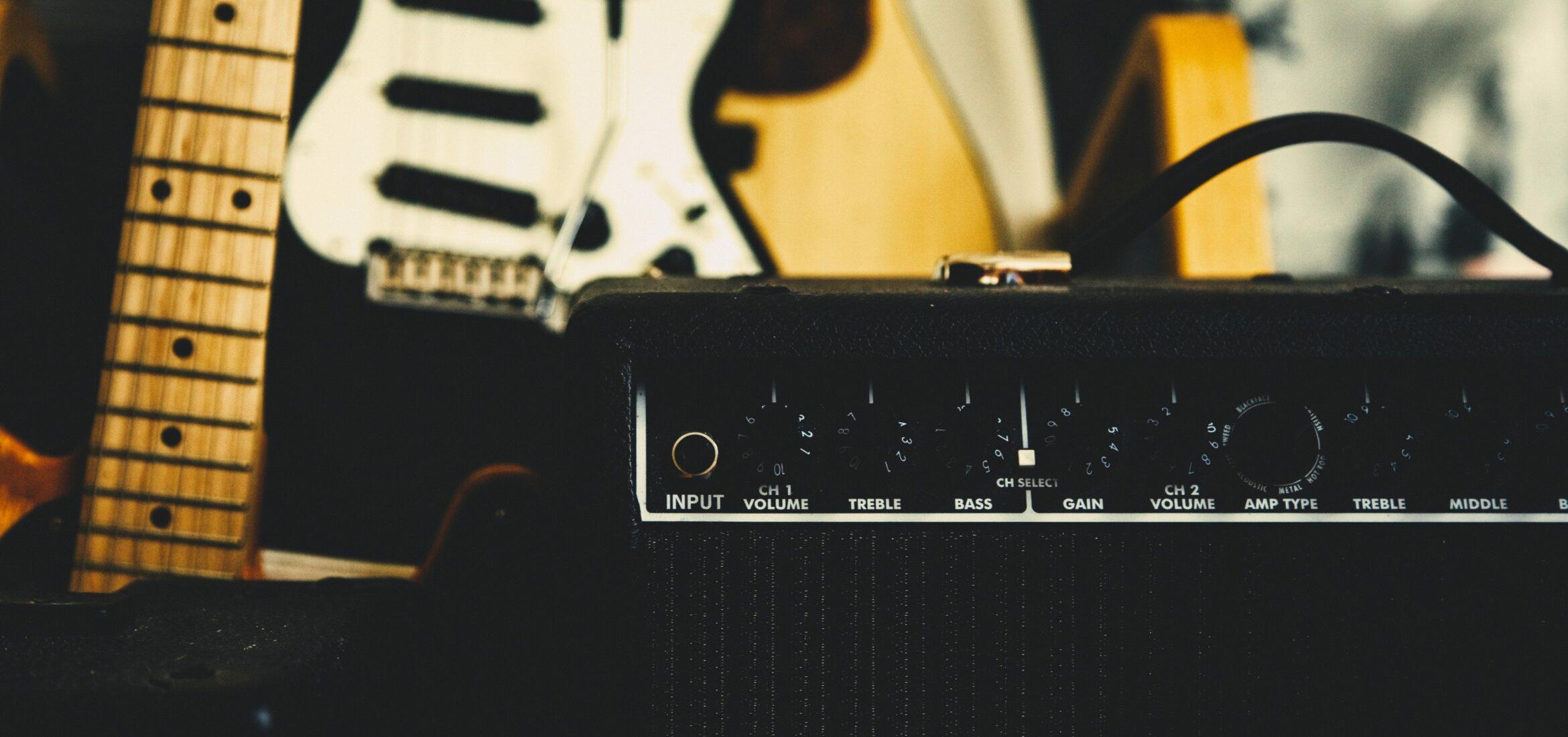Embarking on the journey of music production requires the right tools, and at the heart of your setup lies the audio interface. This essential device serves as the bridge between your instruments, microphones, and computer, facilitating seamless recording and playback. Selecting an audio interface that aligns with your current needs and anticipates future growth is crucial for a smooth workflow and high-quality sound.
What is an Audio Interface?
Simply put, an audio interface connects your audio sources to your computer. Furthermore, it acts as the bridge between the source of audio and your DAW. A digital audio workstation, or DAW, is the recording software. Also, without an interface, there would be no way to capture your audio into the software. The interface is likely the first purchase made when buying equipment for recording. Next to your choice of DAW, the interface is the most important choice determining your future workflow. All audio interfaces perform the same basic function but do so in slightly different ways. They offer varying amounts of connectivity, feature sets, and sound quality.

Types Of Audio Interfaces
Selecting the appropriate audio interface is a pivotal decision that can significantly influence your recording quality, workflow efficiency, and overall production experience. Understanding the various types of audio interfaces available will empower you to make an informed choice tailored to your specific needs.
By Physical Format
Audio interfaces come in different physical formats, each designed to suit various recording environments and workflows. Whether you need a compact and portable solution for mobile recording, a desktop unit for a home studio, or a rackmount interface for a professional setup, choosing the right format ensures seamless integration with your production needs. Let’s explore the main types.
Desktop Interfaces
Designed for musicians and producers working in home studios or mobile setups, these compact devices typically offer 2 to 4 inputs, sufficient for recording vocals or individual instruments. Their portability and user-friendly design make them ideal for small-scale projects.
Rackmount Interfaces
Intended for professional studio environments, these interfaces fit into standard 19-inch racks and provide a higher number of inputs and outputs. They are suitable for recording sessions that require multiple microphones or instruments simultaneously, such as full band recordings. Their robust build and expandability make them a preferred choice for permanent installations.
Portable Interfaces
Tailored for on-the-go recording, these lightweight interfaces are often bus-powered, eliminating the need for external power sources. While they may offer fewer inputs and outputs, their ease of transport and quick setup are advantageous for field recordings or frequent travel.
By Connection Type
Audio interfaces come in various connection types, each offering different levels of speed, latency, and compatibility. The right choice depends on your recording needs, computer setup, and budget. Whether you’re setting up a home studio or working in a professional environment, understanding the differences between these connection types will help you make an informed decision. Let’s break them down.
USB Interfaces
Among the most prevalent, USB interfaces are compatible with a wide range of computers and provide adequate data transfer speeds for most recording tasks. They are an excellent choice for beginners and home studios due to their ease of use and broad compatibility.

FireWire Interfaces
Once popular for their faster data transfer rates compared to USB 2.0, FireWire interfaces have become less common as modern computers phase out FireWire ports. They offered reliable data transfer but are now largely replaced by newer technologies.
Thunderbolt Interfaces
Offering exceptionally high data transfer speeds and low latency, Thunderbolt interfaces are ideal for projects demanding intensive audio processing. They are more prevalent in professional settings and often come at a higher price point.
PCIe Interfaces
These internal card-based interfaces install directly into a computer’s motherboard via a PCIe slot, delivering very low latency and high data transfer rates. Primarily used in professional studios, they offer optimal and stable performance but are generally more expensive and less portable.
When choosing an audio interface, consider both the physical format and connection type that best integrate with your existing equipment and meet your music production requirements.
Connectivity
The amount of I/O—inputs and outputs—separates low-cost starter interfaces from higher-priced alternatives. Typical low-cost beginner interfaces include 1 or 2 inputs and a limited number of outputs. All interfaces have provisions for headphone and monitor speaker connections. However, increasing the amount of I/O also increases the cost. Recording acoustic and vocal work requires a small number of connections, whereas recording a full band with multiple microphones necessitates a more extensive array of inputs. Routing audio out of your computer for processing after recording will require a physical output for each signal sent out.
Choosing a device that is compatible with your setup is key. Companies offer USB, FireWire, Thunderbolt, and Ethernet connections. Some companies provide compact choices with limited I/O but very high-quality components. In those cases, I/O isn’t the only factor determining the price point. The quality of audio conversion, physical components needed to boost mic levels, and build quality all factor into the final pricing structure.
Latency And Driver Stability
Latency refers to the delay between an audio signal entering the interface and its output through speakers or headphones. High latency can disrupt recording sessions, especially when performers rely on real-time monitoring. Selecting an interface with low-latency performance is crucial for maintaining synchronization during recording.
Equally important is driver stability. Unstable drivers can lead to audio dropouts, glitches, and system crashes, hindering productivity. Opt for interfaces from reputable manufacturers known for providing reliable drivers and regular updates to ensure compatibility with your operating system and DAW.
Feature Sets
Many interfaces are quickly becoming the Swiss Army knives of recording. Interfaces offer microphone preamps and HiZ inputs, allowing you to connect a guitar or bass directly. Others have MIDI connections that allow you to control virtual instruments with keyboards or other external control surfaces. In some cases, interfaces include outboard DSP or processing power to run plugins without taxing your computer’s resources. DAW software and included plugin packages can also make a significant difference in the final quality of your recordings.

Audio Interface Sound Quality
Sound quality is subjective and varies from person to person. Individuals process audio signals slightly differently, but most can tell when something sounds good versus a low-quality recording. Beginner interfaces these days are head and shoulders above what was offered 5-8 years ago. However, there is definitely a difference between various offerings. When gearing up to make your first interface purchase, it’s advisable to scour the web for samples of recordings made on different devices. Some interfaces sacrifice audio conversion for good preamps, while others raise the conversion bar and allow for less connectivity.
Conclusion
Choosing the right audio interface is a pivotal decision in your music production journey. By understanding the various types, connectivity options, feature sets, and the importance of sound quality, you can select an interface that not only meets your current needs but also accommodates future growth. Investing time in research and considering your specific recording requirements will ensure that your chosen audio interface becomes a reliable cornerstone of your studio setup, facilitating creativity and high-quality production for years to come.
Lascia un commento
Log in per commentare


